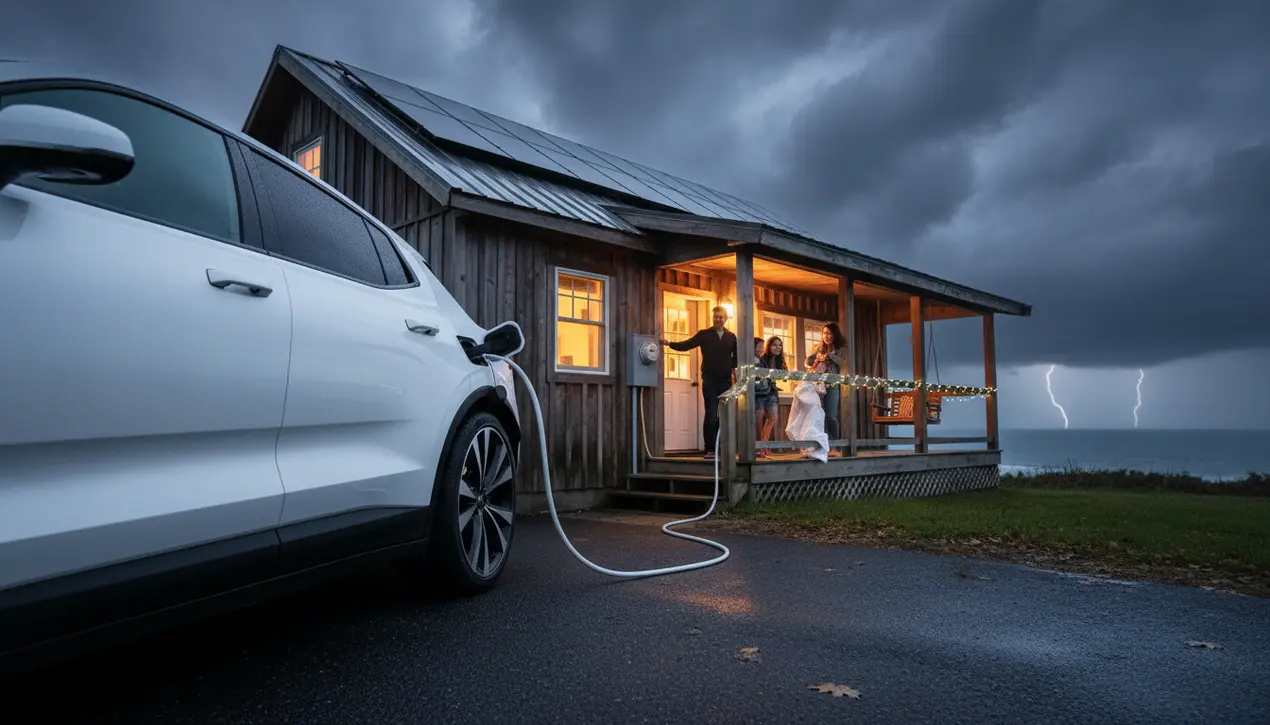
Otherauto & mobilityElectric Vehicles
Are electric cars the next power generators for homes without electricity?
TH
Thomas Green
2 hours ago7 min read1 comments
The concept of the electric vehicle as a mobile power reservoir is rapidly transitioning from speculative fiction to tangible reality, with Polestar's recent implementation of bi-directional charging serving as a pivotal case study in this energy paradigm shift. This technology, often termed Vehicle-to-Grid (V2G) or Vehicle-to-Home (V2H), effectively transforms a car's substantial battery pack from a mere propulsion unit into a dynamic, decentralized power source capable of feeding electricity back into a home or the broader grid during peak demand or outages.The implications are cosmic, echoing the kind of disruptive innovation that redefines humanity's relationship with infrastructure, much like the vision for interplanetary colonization recontextualizes our place in the universe. Imagine a future where a suburban driveway doesn't just hold a car but a silent, sleek power plant on wheels; a family's Polestar isn't just commuting to work but is actively arbitraging energy prices, charging when renewable solar or wind power is abundant and cheap during the day, and then powering the household's evening consumption, thereby flattening the demand curve and enhancing grid stability.This isn't merely an incremental improvement but a fundamental re-architecting of the energy landscape, moving us away from the centralized, brittle grid models of the 20th century toward a resilient, distributed network of millions of mobile energy nodes. The engineering challenges, however, are non-trivial and extend beyond the software enabling the bidirectional flow; they encompass battery degradation concerns from increased charge-discharge cycles, the need for universal charging standards like the Combined Charging System (CCS) or CHAdeMO to support this functionality, and the crucial development of smart inverters and home energy management systems that can seamlessly orchestrate the complex dance between grid power, home consumption, solar panels, and the car's battery.Experts from institutions like the National Renewable Energy Laboratory (NREL) are already modeling these scenarios, projecting that a widespread V2G rollout could potentially meet short-term grid storage needs, deferring or even eliminating the need for costly investments in new peaker plants. The precedent for this exists in the nascent virtual power plant (VPP) concept, where fleets of EVs could be aggregated to form a massive, responsive battery, a concept being trialed by companies like Fermata Energy and in pilot programs with utilities from California to Japan.The potential consequences are profound, particularly for regions prone to extreme weather events and blackouts, where an EV could provide critical backup power for days, a feature that redefines the value proposition of car ownership. Yet, this future is not without its hurdles; regulatory frameworks are lagging, utility business models are being challenged, and consumer adoption hinges on clear economic incentives and ironclad guarantees regarding battery warranty impacts. The narrative of Polestar is thus not just about a single automaker's feature, but a signal flare in the broader technological evolution, a step toward an integrated ecosystem where our vehicles are no longer passive consumers but active, intelligent participants in a sustainable energy future, a small but significant leap on the path to a more resilient and empowered society.
#bi-directional charging
#electric vehicles
#home power
#Polestar
#energy supply
#featured
Stay Informed. Act Smarter.
Get weekly highlights, major headlines, and expert insights — then put your knowledge to work in our live prediction markets.
Comments
Loading comments...
© 2025 Outpoll Service LTD. All rights reserved.